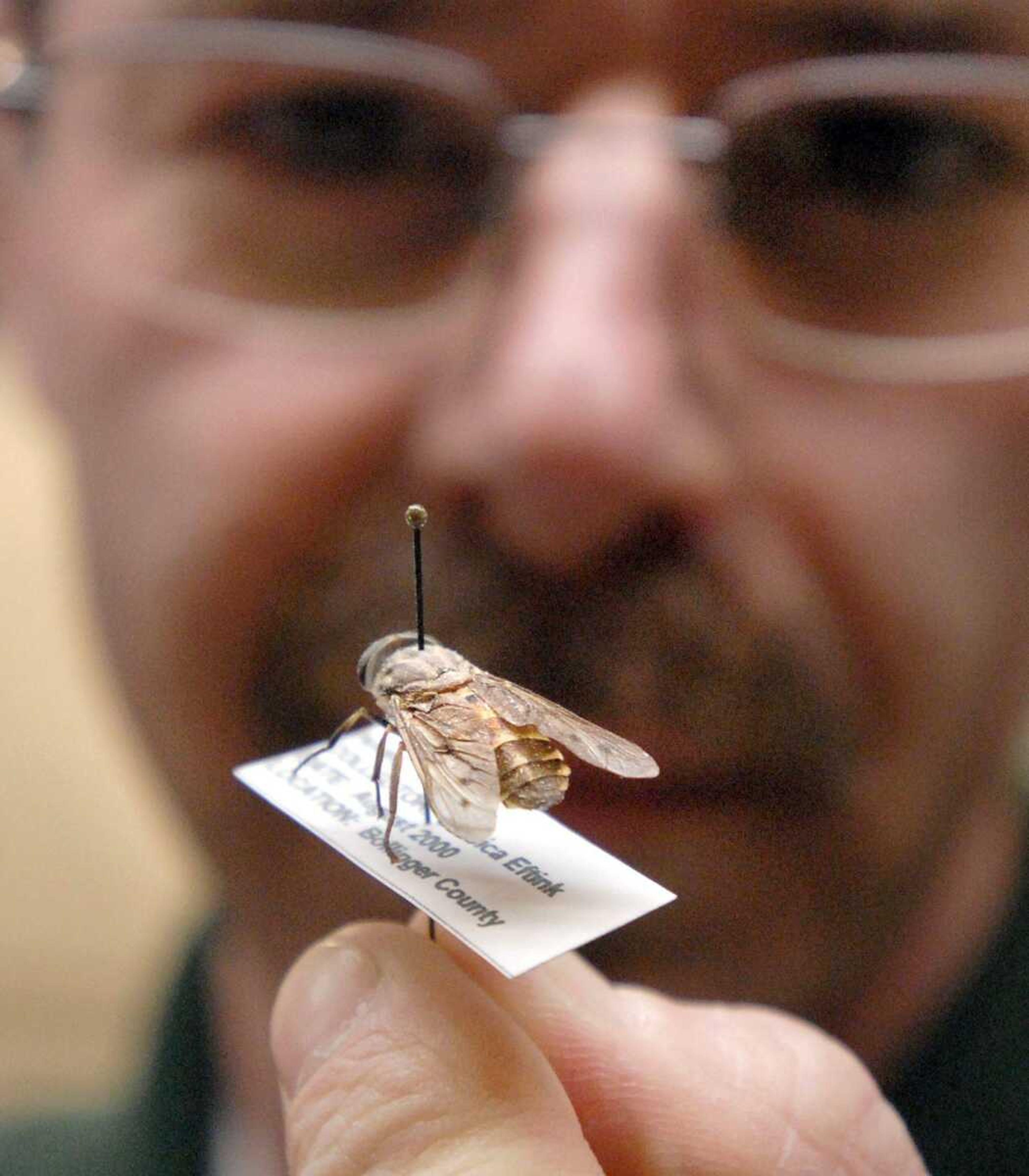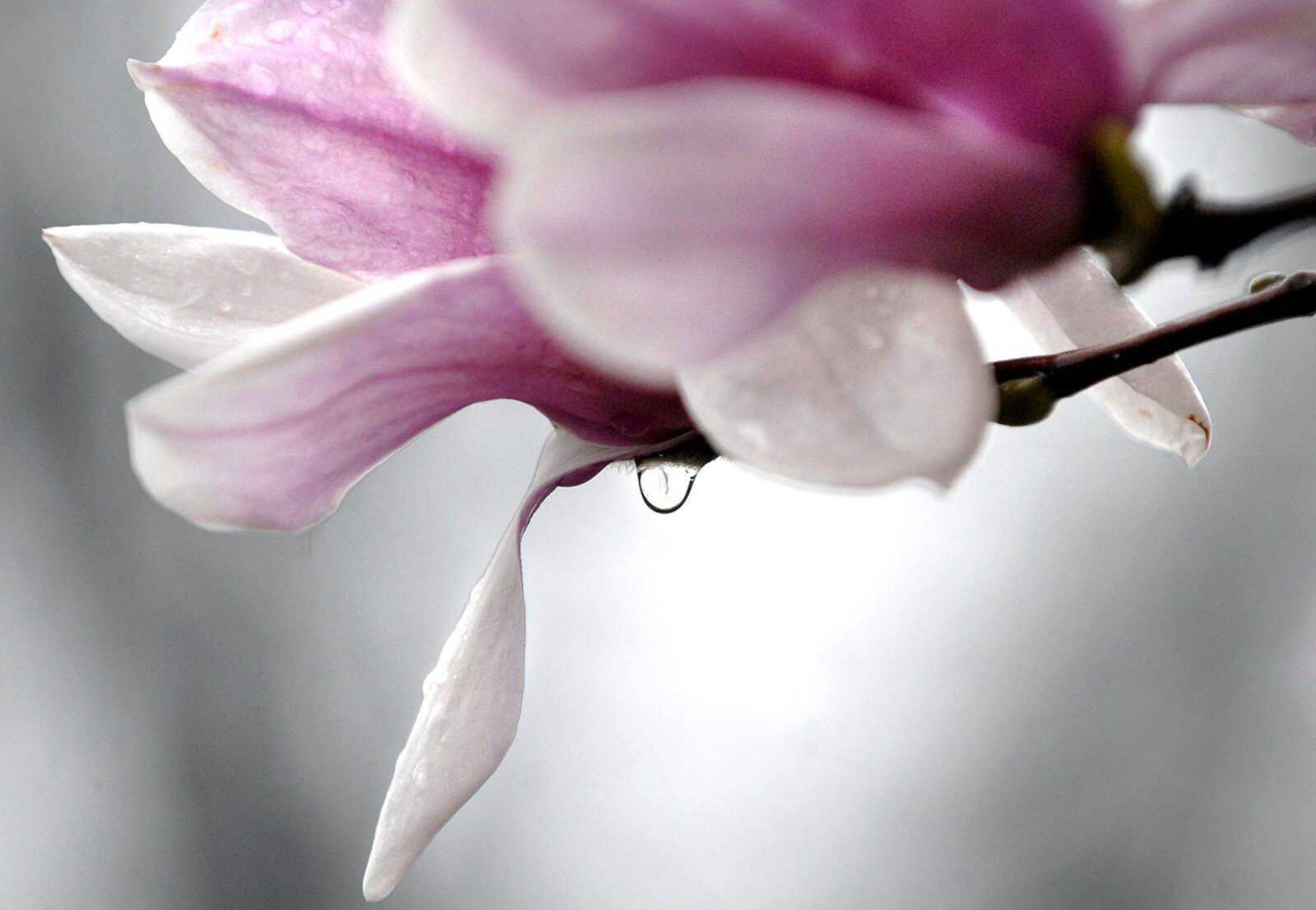2012 spring forecast: Slightly warmer, average rainfall in Southeast Missouri
Geese plodded through puddles on Capaha Field on Thursday afternoon while heavy rain flooded the baseball diamond. The birds didn't seem to mind the shower, but people took exception. Not one person could be found in Capaha Park during Thursday afternoon's downpours...
Geese plodded through puddles on Capaha Field on Thursday afternoon while heavy rain flooded the baseball diamond. The birds didn't seem to mind the shower, but people took exception. Not one person could be found in Capaha Park during Thursday afternoon's downpours.
The park may be largely vacant during the first four weeks of spring because that's when Southeast Missouri will see the season's most rain, the National Weather Service says. The region kicked off meteorological spring, which runs from March 1 to May 31, with sunshine and little rain before Thursday's gloomy weather.
While downpours like the ones Thursday may conjure up thoughts of last year's floods -- which caused the U.S. Army Corps of Engineers to activate the Birds Point-New Madrid Floodway for the first time since 1937 -- this spring's weather should not be as destructive.
"We are looking for above-normal temperatures and near normal precipitation this year," said Robin Smith, a National Weather Service meteorologist in Paducah, Ky.
Based on data for the last 20 years, this spring will bring 13 inches of rain to Southeast Missouri, Smith said. Last spring brought 31 inches.

The nearly average spring comes after the fourth-warmest winter in Cape Girardeau history. The average temperature for this year's winter was 40.7 degrees, said Pat Guinan, a climatologist with the University of Missouri Extension program. Cape Girardeau's warmest winter came during the 1991-1992 season and had an average temperature of 41.2 degrees, Guinan said. The Extension program's records date back to 1930.
Southeast Missouri experienced the warmest winter in the whole state this year, with an average temperature between 44 and 46 degrees, Guinan said. Two to three inches of precipitation was common for most Missouri locations this winter, Guinan said.
Like this winter, spring may be warmer than usual, Smith said.
"Don't expect a heat wave, but it will be a few degrees warmer than normal," Smith said.
Although the region is in for a warm spring, a few frosts are still possible, Smith said. Frosts in April or May could adversely affect eager gardeners who capitalized on the warm winter, said Donna Aufdenberg, a horticulture specialist at the University of Missouri Extension Center.
"I fear we're pushed a little too far ahead," Aufdenberg said. "If people jump the gun and put out tomatoes and peppers, they could get frozen out."
Cold-weather plants like broccoli, cabbage, lettuce and spinach may also be ahead of schedule but not in danger of being affected by a frost, Aufdenberg said.
Around the area, sufferers of pollen allergies seem to be having a tough time this spring. They won't see any relief over the next few days. Today, Saturday and Sunday may be medium to high pollen days, according to Pollen.com.
A normal spring will allow the region to grow more corn, said Anthony Ohmes, a regional agronomy specialist with the University of Missouri Extension Center. Last year's wet spring waterlogged some cornfields and forced farmers to replant.
"Corn got behind in development and just didn't develop like it could have," Ohmes said. "We had shorter corn than normal last year."
Other crops literally got a head-start this year because of the warm winter. Wheat began to head early this year, and Ohmes said farmers have worked to stymie its growth. The early heading could result in stem rust later, he said.
The rapid growth also makes the wheat and other crops susceptible to moths that morphed from caterpillars earlier because of this winter's warmer weather, Ohmes said. Wheat is especially vulnerable to army worms, although they have not been a problem in recent years.
The nation may also see more bees, wasps, termites and ants because of a mild winter, according to a news release from the National Pest Management Association.
Insects survive harsh winter temperatures using several strategies to slow down their metabolism and respiration, according to the release. With the warmer temperatures, many insects are forced out of their hibernation states prematurely in search of food.
"Many insects hibernate during the cold winter months, but as this winter has been anything but typical, they may be emerging from their hiding places much earlier than we expect," association vice president of public affairs Missy Henriksen said in the release.
psullivan@semissourian.com
388-3635
Connect with the Southeast Missourian Newsroom:
For corrections to this story or other insights for the editor, click here. To submit a letter to the editor, click here. To learn about the Southeast Missourian’s AI Policy, click here.










